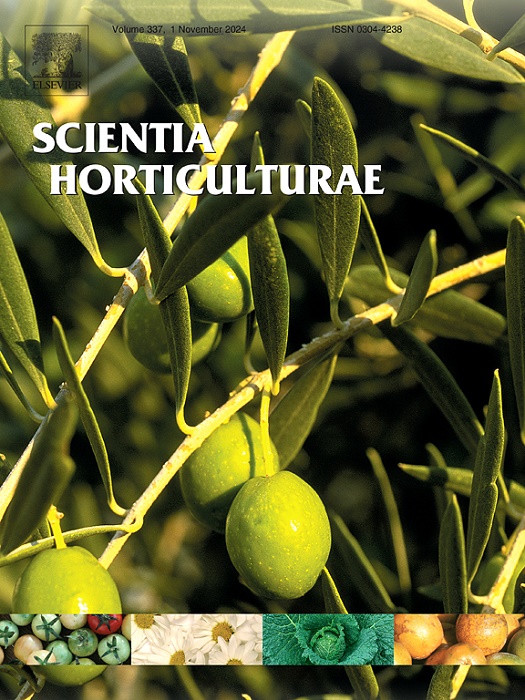Optimizing phosphorus and potassium input based on phosphorus and potassium uptake characteristics in young dwarf apple trees
IF 3.9
2区 农林科学
Q1 HORTICULTURE
引用次数: 0
Abstract
The nutrient requirements of apple trees for phosphorus (P) and potassium (K), as reflected in their uptake characteristics, are crucial for formulating appropriate fertilizer application strategies and improving P and K use efficiency. However, uncertainties persist concerning the uptake of these two elements in apple trees. A two-year field experiment (2019–2021) was conducted in a newly built dwarf ‘Fuji’ apple orchard, with and without nitrogen (N) fertilizer (75 kg N ha–1), to determine the uptake patterns of P and K by trees and the contribution of reserve P and K to total P and K. The results showed that the annual requirement for young dwarf apple trees was 1.4–1.8 kg P ha–1 and 5.3–8.6 kg K ha–1 at a P: K ratio of 1.0: (3.3–5.6). N fertilization had no significant effect on fruit yield, quality, nutrient absorption, and partitioning of the young apple trees. There was a significant positive relationship between P and K partitioning and biomass partitioning. Both P and K uptake were directly affected by the tree growth status. In the 2019–2020 season, the peak of P and K uptake occurred from the end of spring shoot growth to nutrient withdrawal, when 76.2 % of P and 76.1 % of K were absorbed by the trees. From nutrient withdrawal to dormancy, the nutrient uptake decreased, accounting for only 16.5 % and 7.4 % of P and K uptake, respectively. In the 2020–2021 season, the nutrient uptake peaked from spring shoot slow growth to the end of spring shoot growth. The proportion of P and K absorbed at this duration was 53.4 % and 57.2 %, respectively. However, P and K uptake was limited from nutrient withdrawal to dormancy and from the end of spring shoot growth to autumn shoot growth. Notably, >85 % of the P and 55 %–67 % of the K in the trees were correspondingly derived from the reserve P and K at spring shoot slow growth in the two seasons. The P and K fertilization can be synchronized with the tree demand by increasing the amount during the peak of tree uptake and reducing the application during stages of inactive uptake. The contribution of reserve P and K in trees must be considered when developing fertilization strategies for fruit trees.
求助全文
约1分钟内获得全文
求助全文
来源期刊

Scientia Horticulturae
农林科学-园艺
CiteScore
8.60
自引率
4.70%
发文量
796
审稿时长
47 days
期刊介绍:
Scientia Horticulturae is an international journal publishing research related to horticultural crops. Articles in the journal deal with open or protected production of vegetables, fruits, edible fungi and ornamentals under temperate, subtropical and tropical conditions. Papers in related areas (biochemistry, micropropagation, soil science, plant breeding, plant physiology, phytopathology, etc.) are considered, if they contain information of direct significance to horticulture. Papers on the technical aspects of horticulture (engineering, crop processing, storage, transport etc.) are accepted for publication only if they relate directly to the living product. In the case of plantation crops, those yielding a product that may be used fresh (e.g. tropical vegetables, citrus, bananas, and other fruits) will be considered, while those papers describing the processing of the product (e.g. rubber, tobacco, and quinine) will not. The scope of the journal includes all horticultural crops but does not include speciality crops such as, medicinal crops or forestry crops, such as bamboo. Basic molecular studies without any direct application in horticulture will not be considered for this journal.
 求助内容:
求助内容: 应助结果提醒方式:
应助结果提醒方式:


